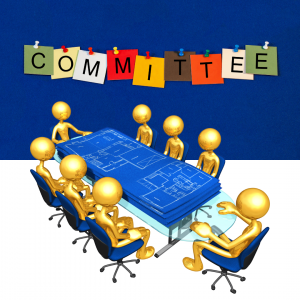Your board of directors is conducting a regular board meeting when a disgruntled owner hands over a petition to the board. Now what? Is it valid? Do you have to hold an election or meeting? If so, by when? Where do you go from here? These are just some of the questions you might have when receiving a petition, and there are many others to consider. Membership petitions are becoming increasingly common for associations, and the relevant statutory authorities do not provide the clearest picture of how associations should handle them. Many owners believe they can demand anything they want through a petition, which is simply not the case.
Petitions are primarily governed by the California Corporations Code. Section 7510(e) of the Corporations Code states that 5% or more of the owners of a corporation can submit a petition for a special meeting of the members for any lawful purpose. Section 7511(e) of the Corporations Code states that the petition must be in writing and submitted to the board chair, president, vicepresident, or secretary. When receiving a petition, there are a few threshold issues to confirm. First, is the petition signed by 5% or more of the owners?
Related to this, do the signatures on the petition belong to actual owners? If 5% or more of the owners have not signed a petition, you can stop there because the petition is invalid. Of course, sometimes this is difficult to tell. When reviewing a petition, confirm that the signatories are record owners on title (i.e., the owners listed on the unit grant deed). Sometimes you will see multiple persons signing from one unit, which is only permissible if all such persons are actual owners. If not, only the owner(s) listed on the grant deed should be counted. Tenants and non-owner family members also do not count toward the 5% requirement.





 Does your board table decisions because you can’t get through all of the discussion? Is there a big project that your association needs to complete, but the minutia of it is overwhelming the board? Don’t let the added work hold you back. Recruit volunteers from the membership to assist the board through the creation of a committee.
Does your board table decisions because you can’t get through all of the discussion? Is there a big project that your association needs to complete, but the minutia of it is overwhelming the board? Don’t let the added work hold you back. Recruit volunteers from the membership to assist the board through the creation of a committee. Under California law, most licensed contractors or suppliers that provide labor, services, equipment, or materials on projects involving the common area of a community association are entitled to record a mechanic’s lien or issue a stop payment notice if they are not paid for their work or materials. Associations involved in such projects often receive 20-day “preliminary notices” from vendors and wonder what they are and what, if anything, they are supposed to do with them. Contractors are required to send these preliminary notices to associations to preserve their rights to record mechanic’s liens or issue stop payment notices. The preliminary notice must contain certain information, including a description of the nature and estimated cost of the work, the identities of the parties, and the location of the property in question, as well as a boldfaced “Notice to Property Owner” statement. Contractors that are under direct contract with an association (such as a “general” contractor that hires subcontractors aka “subs” for a project) are not required to serve a preliminary notice on the association, because the association is presumably already aware of all of the information that a preliminary notice would otherwise contain. Direct contractors are instead required to serve preliminary notices on the actual or reputed construction lender for the project.
Under California law, most licensed contractors or suppliers that provide labor, services, equipment, or materials on projects involving the common area of a community association are entitled to record a mechanic’s lien or issue a stop payment notice if they are not paid for their work or materials. Associations involved in such projects often receive 20-day “preliminary notices” from vendors and wonder what they are and what, if anything, they are supposed to do with them. Contractors are required to send these preliminary notices to associations to preserve their rights to record mechanic’s liens or issue stop payment notices. The preliminary notice must contain certain information, including a description of the nature and estimated cost of the work, the identities of the parties, and the location of the property in question, as well as a boldfaced “Notice to Property Owner” statement. Contractors that are under direct contract with an association (such as a “general” contractor that hires subcontractors aka “subs” for a project) are not required to serve a preliminary notice on the association, because the association is presumably already aware of all of the information that a preliminary notice would otherwise contain. Direct contractors are instead required to serve preliminary notices on the actual or reputed construction lender for the project. The United States Equal Employment Opportunity Commission (“EEOC”) recently created a new webpage with helpful practical information to guide employers and employees about employment discrimination based on sexual orientation and gender identity. This new
The United States Equal Employment Opportunity Commission (“EEOC”) recently created a new webpage with helpful practical information to guide employers and employees about employment discrimination based on sexual orientation and gender identity. This new  When SB 323 took effect on January 1, 2020, it greatly modified the Davis-Stirling Common Interest Development Act’s election procedures, including timelines for conducting an election. In the process, it inadvertently created a conflict in the law regarding recall elections that community associations have been struggling with ever since.
When SB 323 took effect on January 1, 2020, it greatly modified the Davis-Stirling Common Interest Development Act’s election procedures, including timelines for conducting an election. In the process, it inadvertently created a conflict in the law regarding recall elections that community associations have been struggling with ever since. Many California community associations are dealing with massive and significant increases in their insurance premiums. These increases were not anticipated and as a result they are unbudgeted requiring that boards levy emergency special assessments, borrow from reserves or otherwise find the money to pay the increased cost of insurance.
Many California community associations are dealing with massive and significant increases in their insurance premiums. These increases were not anticipated and as a result they are unbudgeted requiring that boards levy emergency special assessments, borrow from reserves or otherwise find the money to pay the increased cost of insurance.